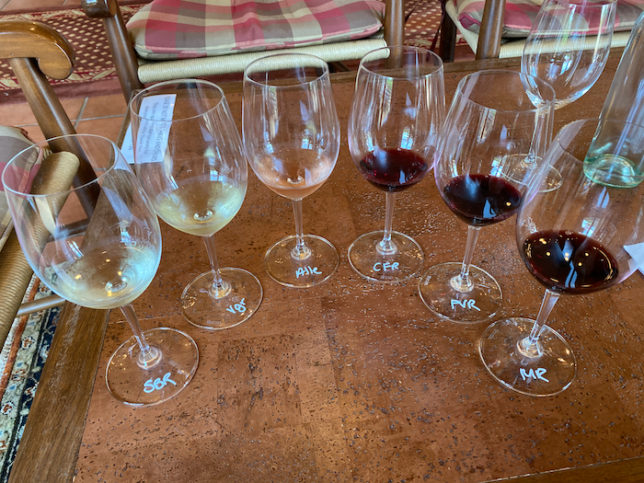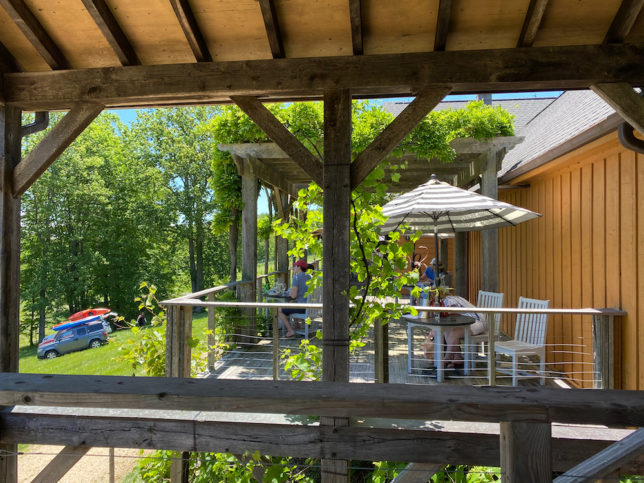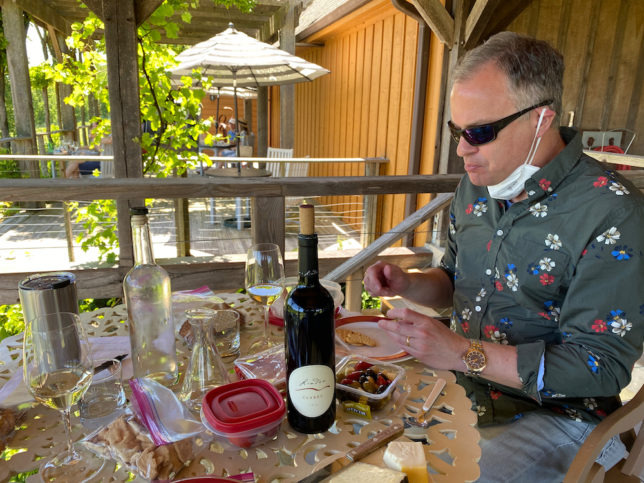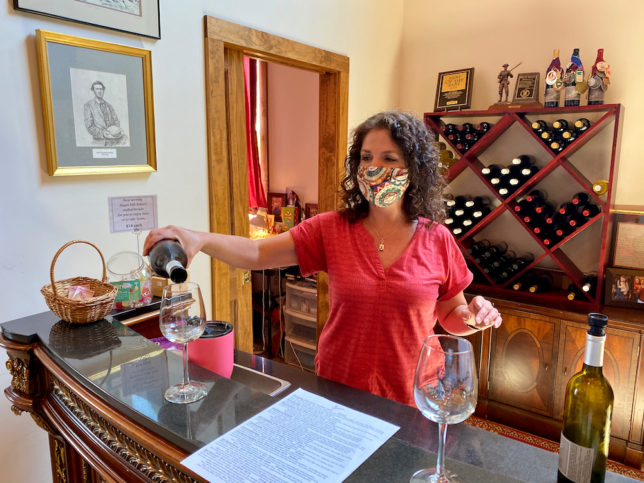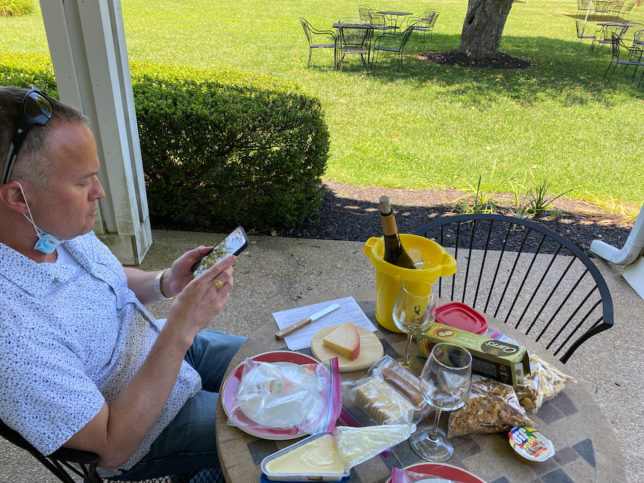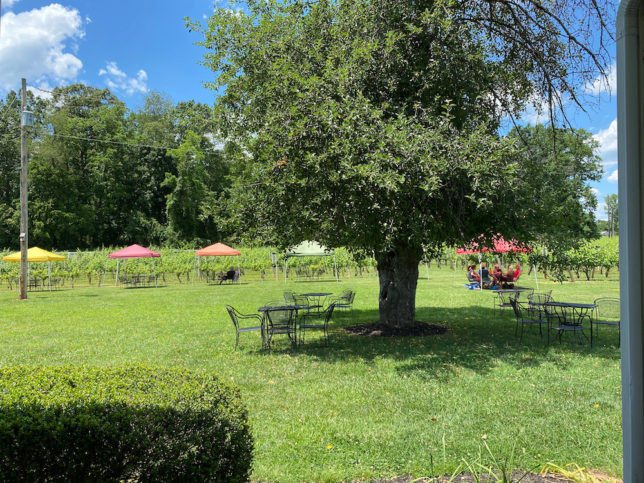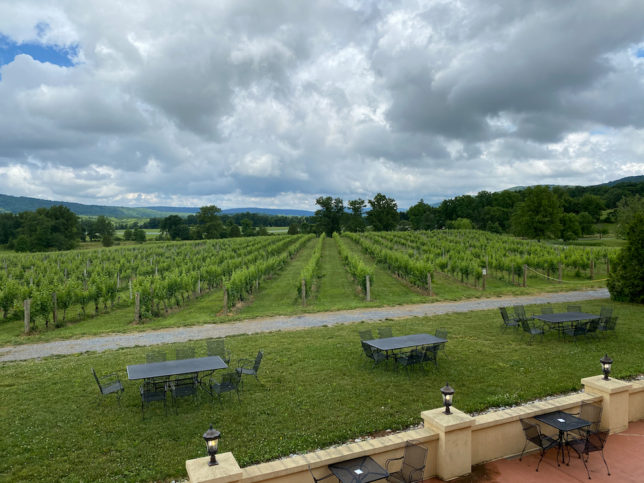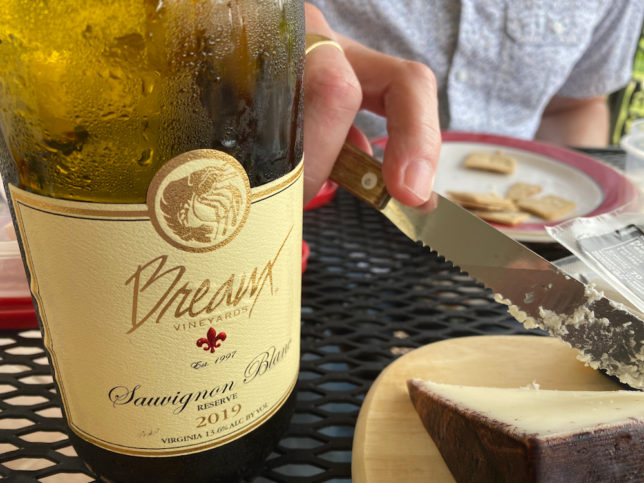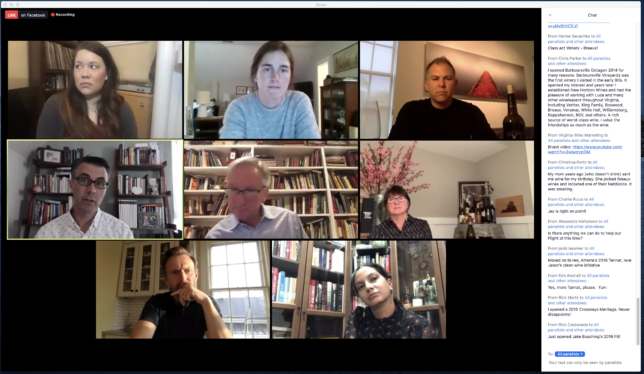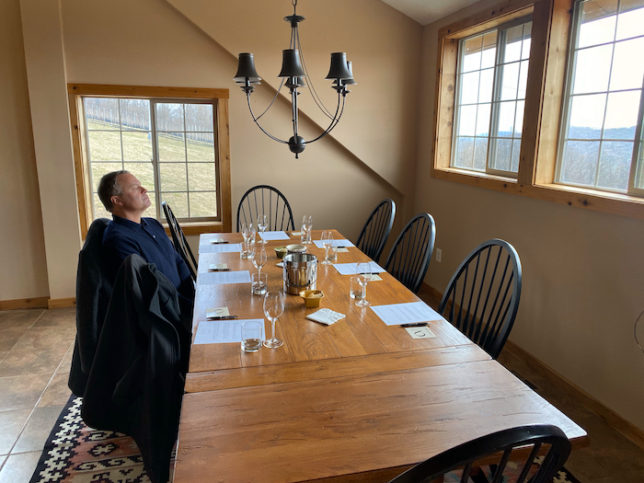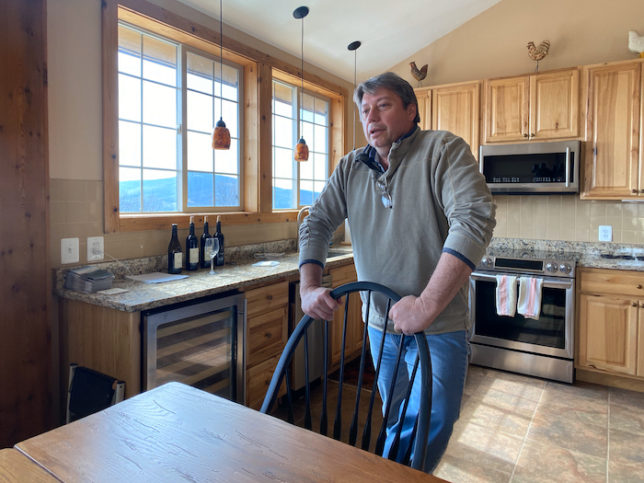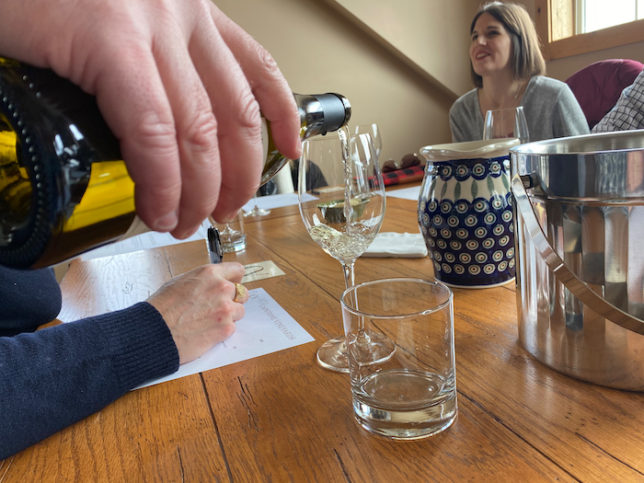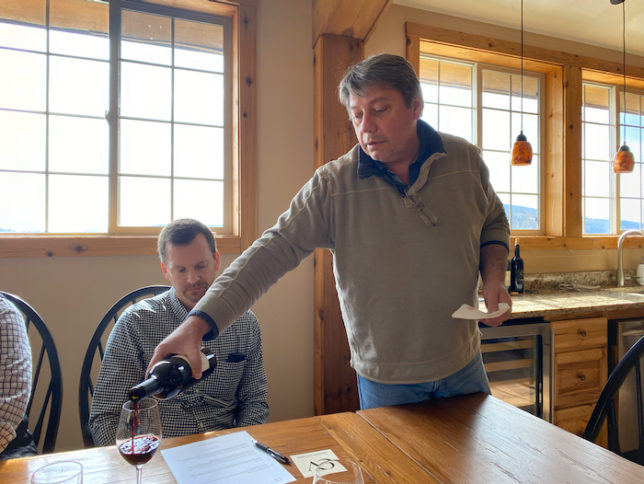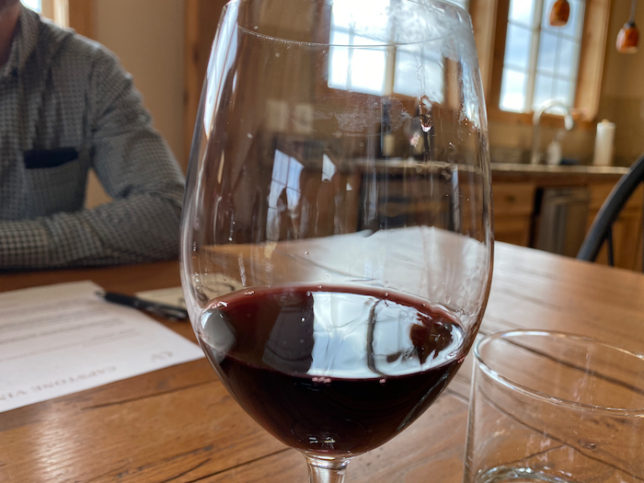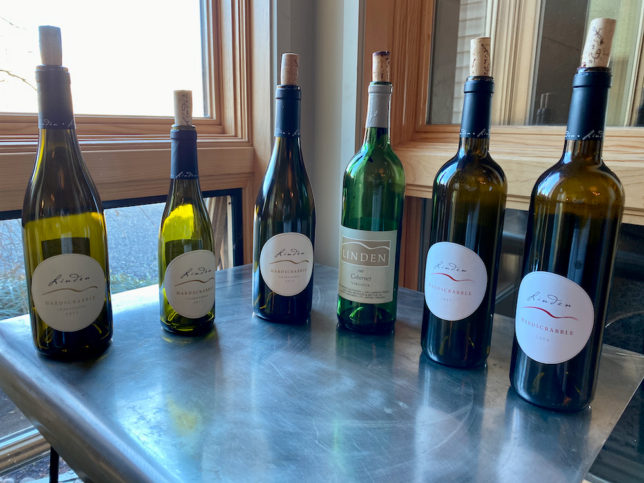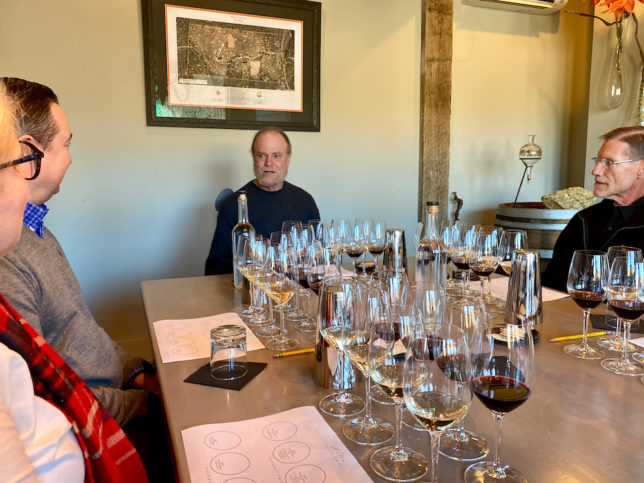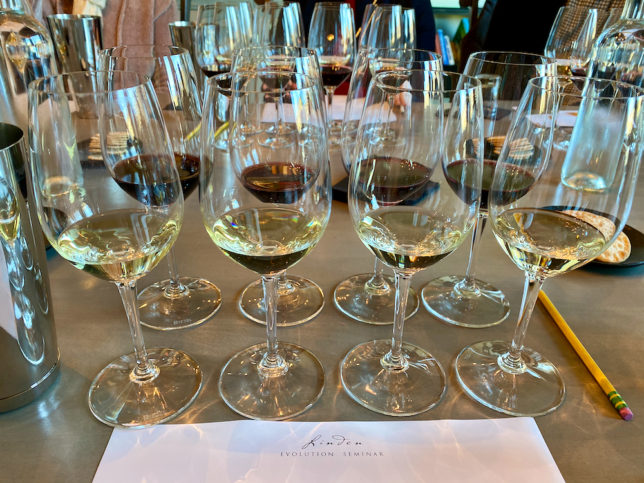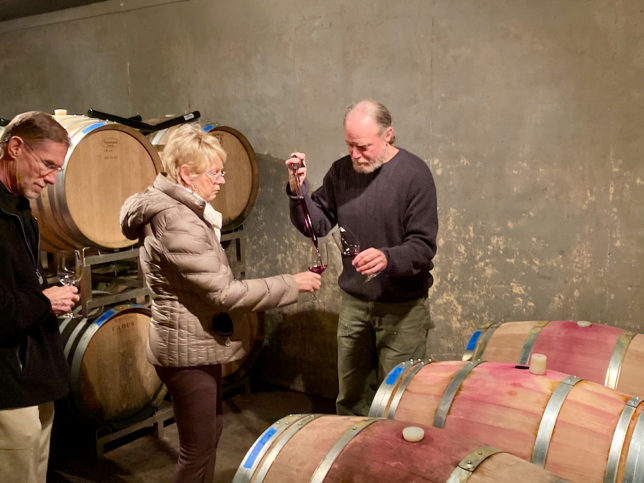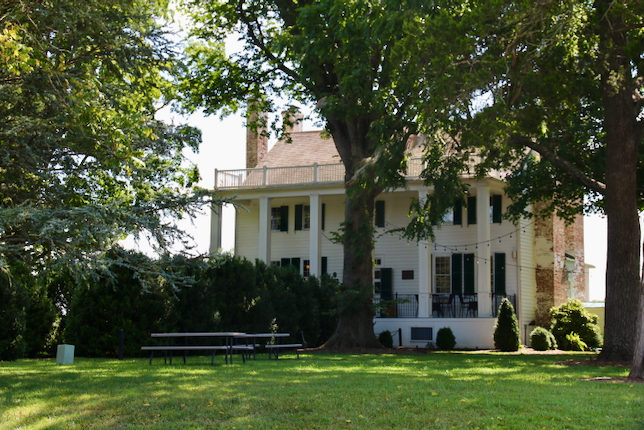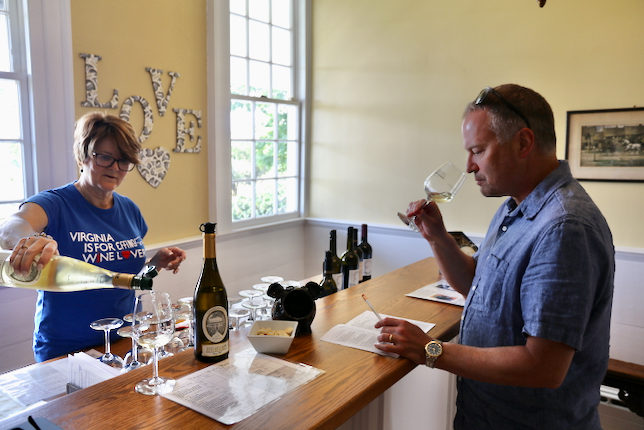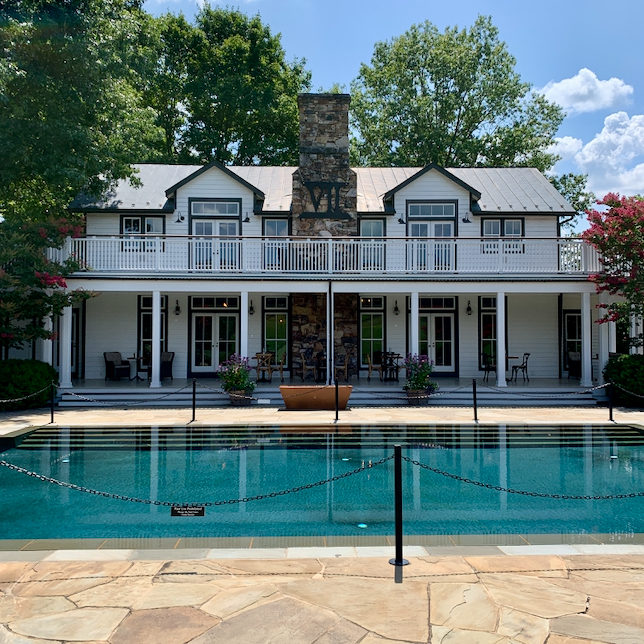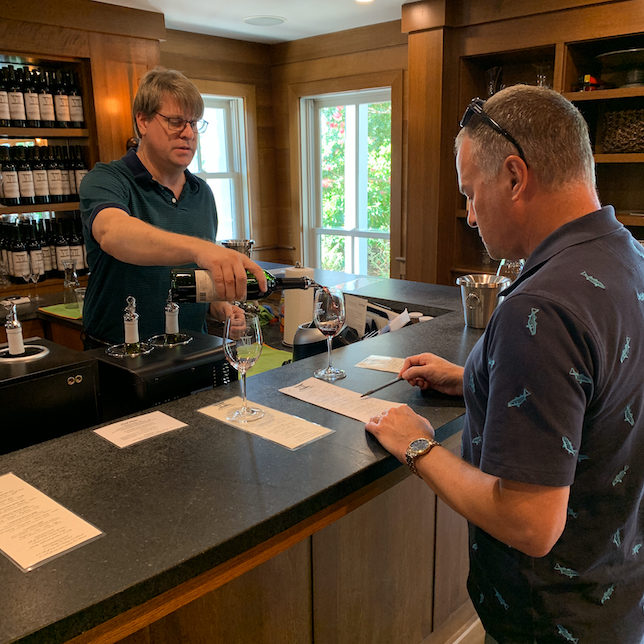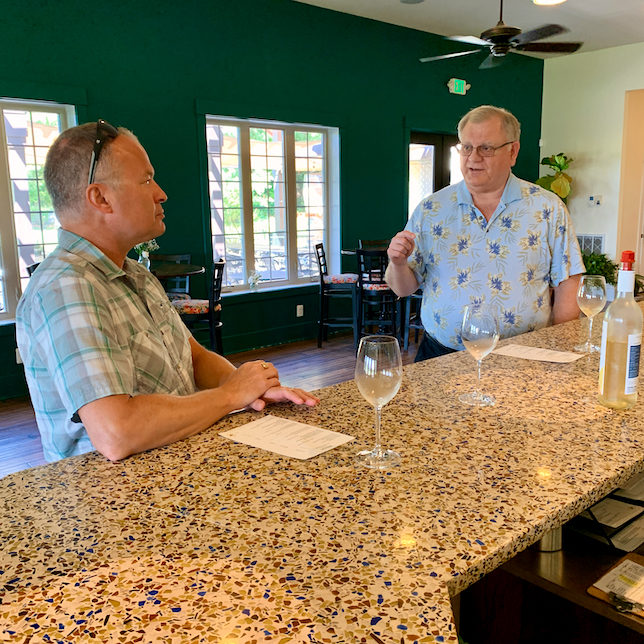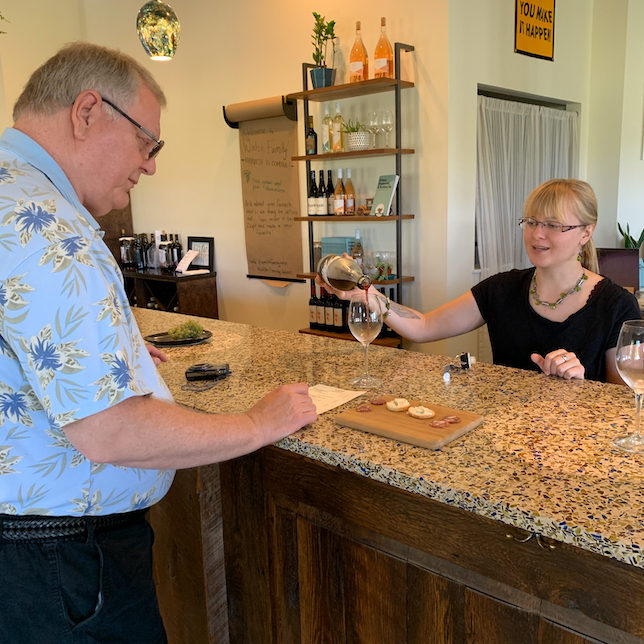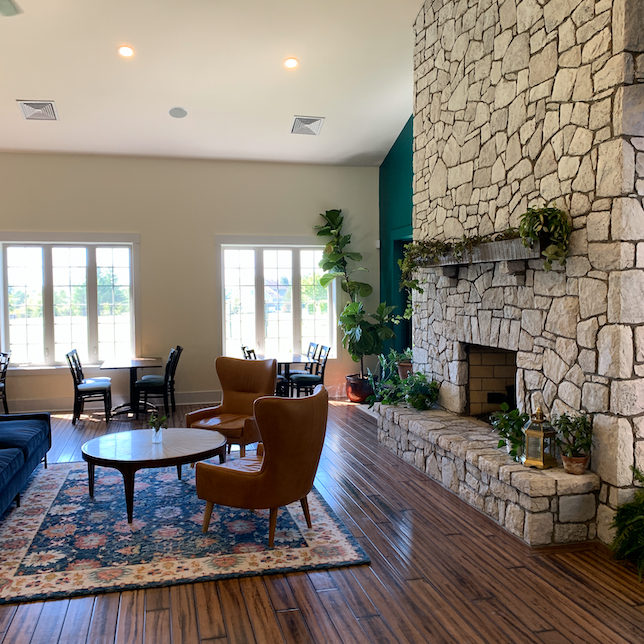Paul and I continue to slowly travel the wine trails of Virginia, and our last trek took us to Cana Vineyards. We had not been to Cana in quite a few years, and we learned that the winery is now owned by Lisa and Bryce Petty. They purchased the vineyard and winery from the Bell family in 2018. Co-owners Michelle and Tom Grant are now also part of the Cana team. The Cana facility now includes the expansive Sunset Pavilion which provided for adequate spacing of customers on a very cold afternoon.
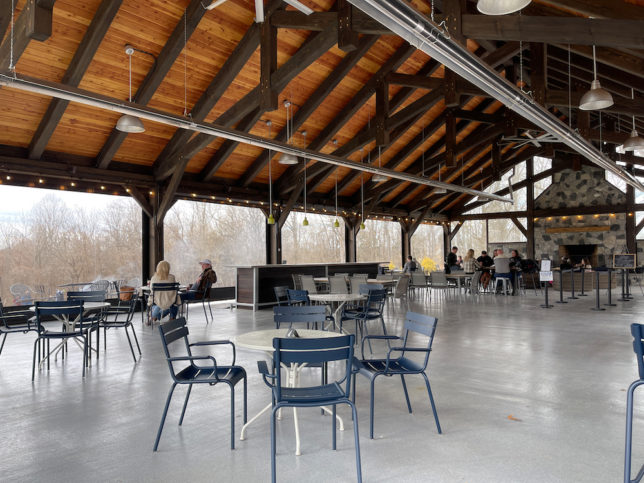
Another noted change from our last visit, though, was the improved quality of the wines. I am an unashamed Chardonnay lover, and Cana’s 2019 Chardonnay hit all the right notes for me. It was elegant and well balanced with lovely pear and apple aromas, while the palate was treated to pear and citrus flavors accented with fall spice and a touch of oak. The 2019 Petit Manseng was another success and an example of what this variety can do in Virginia when in the right hands. Fresh tropical notes with a nice, refreshing acidity ended with a dry finish and destined to pair well with any seafood dish. The 2018 Le Mariage, a blend of Bordeaux varieties with Merlot taking the lead, presented a juicy berry entry on the palate followed by a spicy edge on the finish. Remember, 2018 was a very tricky vintage due to lots of rain and not a lot of sunshine in most parts of Virginia; however, a newcomer to Virginia wine would not have been the wiser after sampling this well-crafted blend. Paul’s favorite was the Cabernet Franc produced from the stellar 2017 harvest. Raspberry and tobacco notes melded with cherry flavors to present a rich wine made more complex by barrel-aging for 15 months. If leg of lamb is on the menu, it might be a good idea to have a bottle of this one on the wine rack as a pairing option.
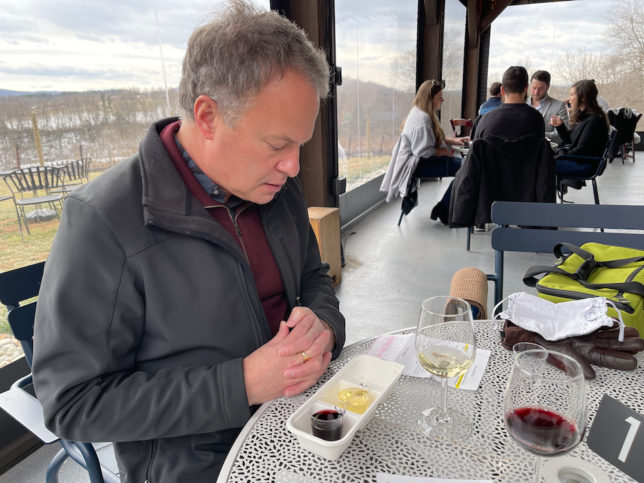
Our tasting experience was enhanced by the expert knowledge of Don, a familiar face to us from previous visits to Cana (and Chrysalis before that!). Don got us up to speed on the various changes at the winery since our last visit which prompted me to inquire about the winemaker responsible for the improvements noted in the wines. He informed us Melanie Natoli assumed the duties of winemaker and vineyard manager in 2015; we then recalled that Melanie studied winemaking at Fabbioli Cellars. We decided it was time to learn more about Melanie, and she agreed to participate in an interview. (Ordinarily, we would arrange to do this in person, but—-covid.) Continue reading to learn more about the very talented Melanie Natoli.
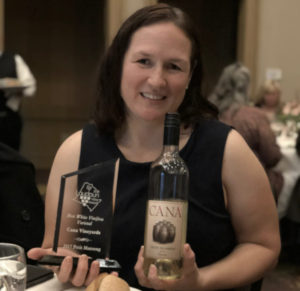
1. Why did you decide to switch careers from being in physical therapy to becoming a wine makers?
I followed my heart. When I make big decisions, I go with my gut. Growing up, no one in my family drank, so I found wine later. Hence, it wasn’t my first career choice, but when I found it, I knew it was my path.
2. Have you found any comparisons between being a physical therapist and a winemaker? Any similar challenges? Rewards?
Good question. They both come from the heart. I’ve always loved science and I chose physical therapy so I could be of service to others. Compassion is rooted in the heart, and so is creative passion for art, winemaking. As a winemaker I still get to connect with people, just in a different way.
3. Why did you decide to become a winemaker in Virginia with its various challenges? Why not someplace like California, for example?
Virginia is where life put me. Virginia is where my love and interest in wine grew. I was close to moving to California and going back to school for a degree in winemaking, but I found/made my own path here and I’m so glad I did. The challenges we face here may cause me to lose a lot of sleep at times, but they’re also what keeps it exciting. There’s always going to be more to learn and I love that.
4. You were awarded Woman Winemaker of the Year at the Women’s International Wine Competition in 2017. Winemaking is still dominated by men, though. Do you think it is still more difficult for women to break into the field and then earn recognition for their achievements?
Sometimes. Starting in this industry as a woman and someone coming in with no experience or connections, I do feel I had to work harder to prove myself, so I have. I’ve had a few interactions that weren’t fair, but I kept my head down, worked harder, and poured myself into my wine. Now I’m proud of what I put in the bottle and I have confidence in my abilities, so that kind of stuff can roll off my back. I’ve only made wine in Virginia, but I have a suspicion the challenge would be greater in other regions. Our industry is young enough that a long history of a good ol boys club wasn’t built. Although there may still be more men working in our industry, the women are here and making their mark. The supportive community of Virginia winemakers is one of the things that makes our region so amazing.
5. What grape varieties do you grow at Cana? Which do you consider to be the flagships at Cana? Do you have plans to expand your portfolio beyond what is currently planted?
Reds: Merlot, Cabernet Franc, Petit Verdot, Norton
Whites: Petit Maseng, Viognier
We have 2 wines that I produce from our estate fruit. The Unite’ Reserve is a blend of Merlot, Cabernet Franc, and Petit Verdot. The blend will vary depending on what shines in the vineyard each year. The other estate wine is our Petit Manseng which often has some of the estate Viognier blended in.
We only have 7 acres on the estate, so we also source from some fantastic partner growers. The 2 estate wines have a special place in my heart because I work the vineyard all season, so those wines I craft every step of the way from budbreak to bottle, but I have some other favorites. I’ve been working with Albarino since 2015, my first vintage at Cana, and I’ve had so much fun developing it. And did you think you’d talk to me without hearing about rose’? That is my number one love. If I’m going to be remembered as a winemaker for one thing, I want it to be dry rose’. Right now, we have 2 in our portfolio, Merlot and Cabernet Sauvignon.
As far as new wines for the portfolio. I have two new red varietals hitting the bottle in April, so keep an eye out for them at the end of this year. I’d like to bring back Rkatsiteli, and I always want to make more rose’.
6. You have won a trip to a tropical island for a much needed vacation. You can bring three of your favorite Cana wines along on the trip. Which wines and vintages would they be?
I love this one! I also love the idea of a trip to a tropical island, much needed indeed! Since I make 2 rose’s, that’s 2 of the bottles! Because rose’. The 3rd is a tough choice, because I really love my Albarino, but Petit Manseng would be the perfect pairing for somewhere tropical. That’d be a gametime decision, when do I leave? And for vintages, 2019 or 2020. Those are my favorite white vintages so far, because each year I get to dial it in a little better. Although I may go 2017 for the Petit Maseng, I really loved the acid sweetness balance on that bottle.
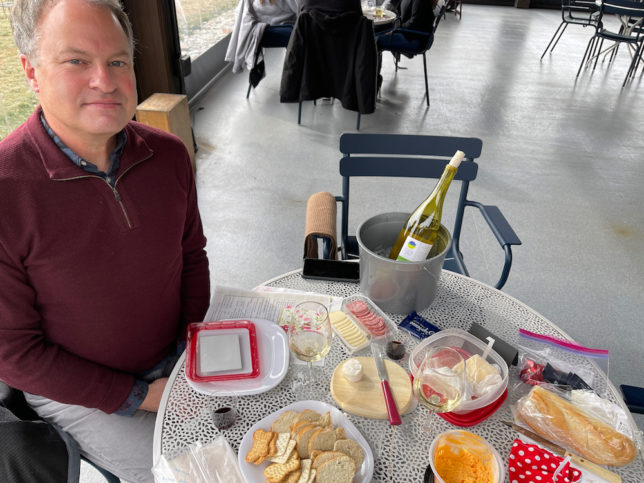
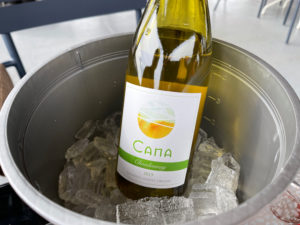
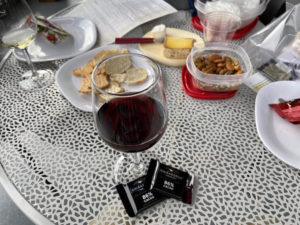
We know that we will return to Cana Vineyards sooner rather than later. However, if readers get there before we do, please be sure to mention that Virginia Wine Time sent you!
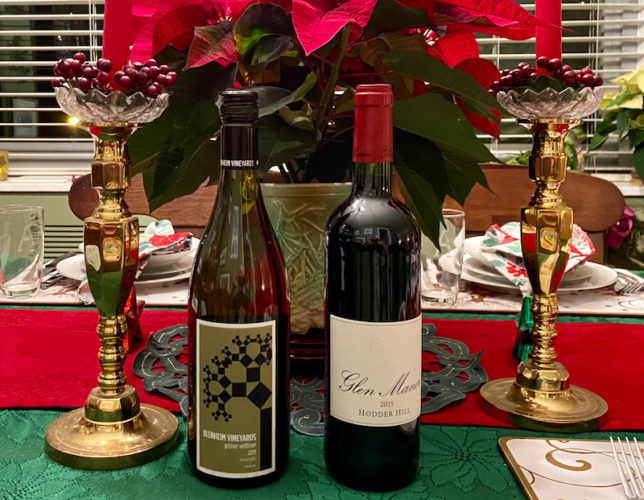
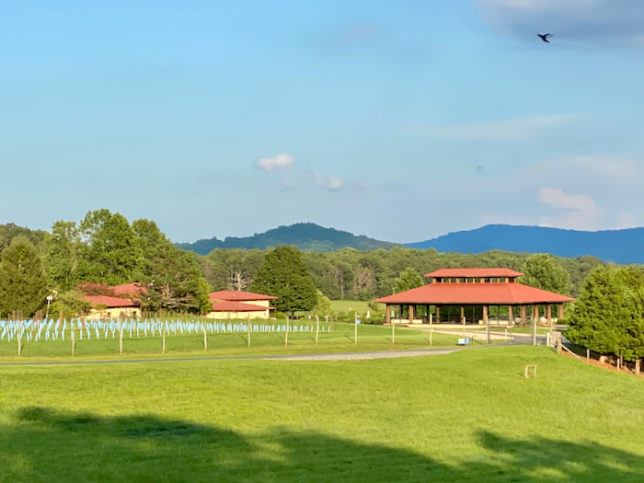
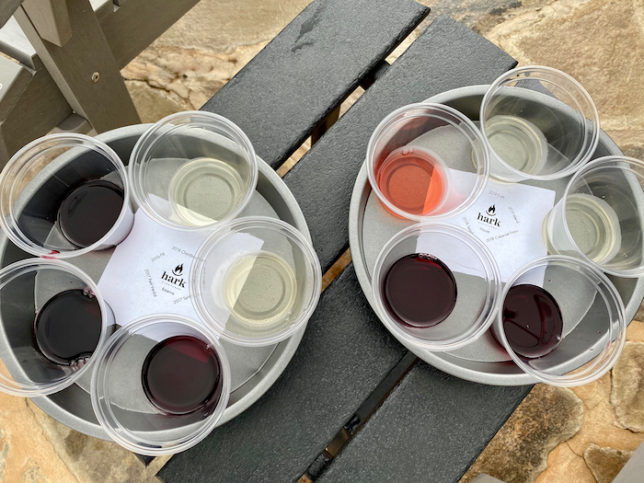
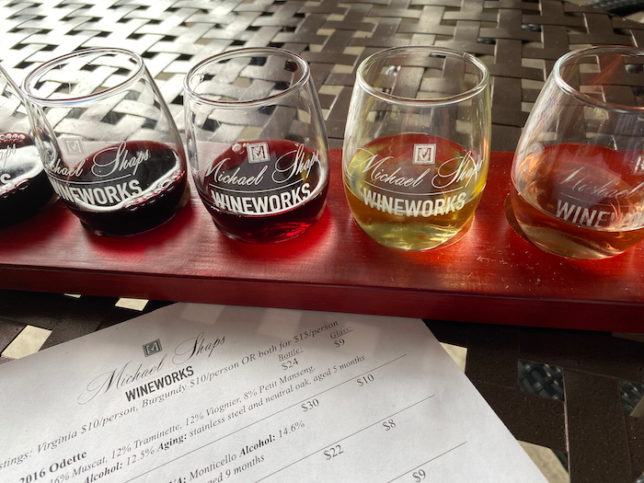
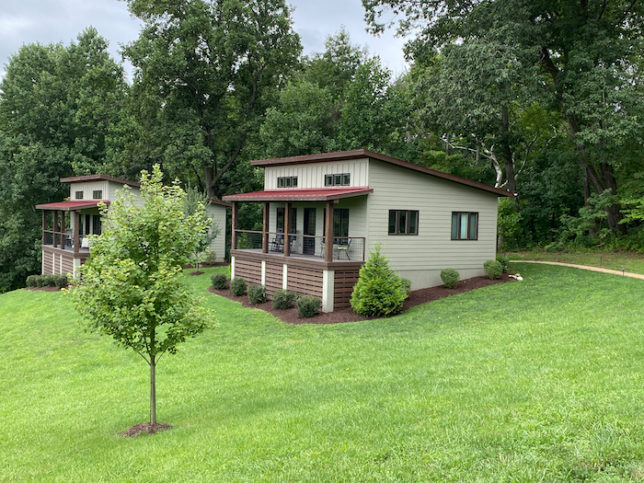
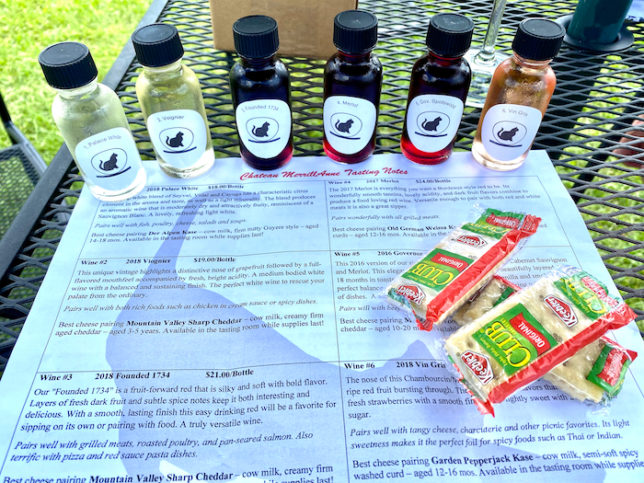
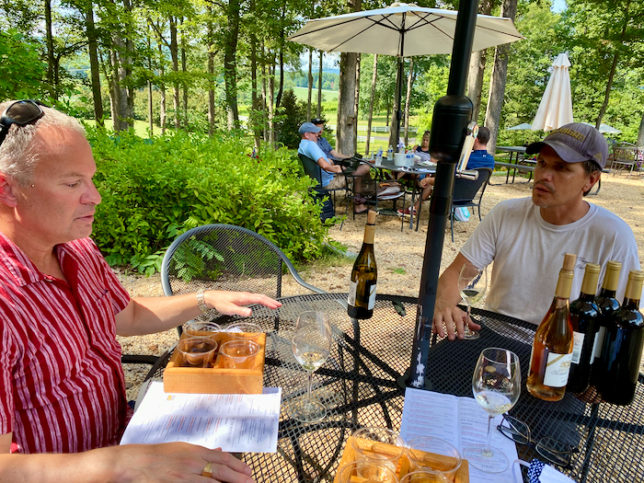
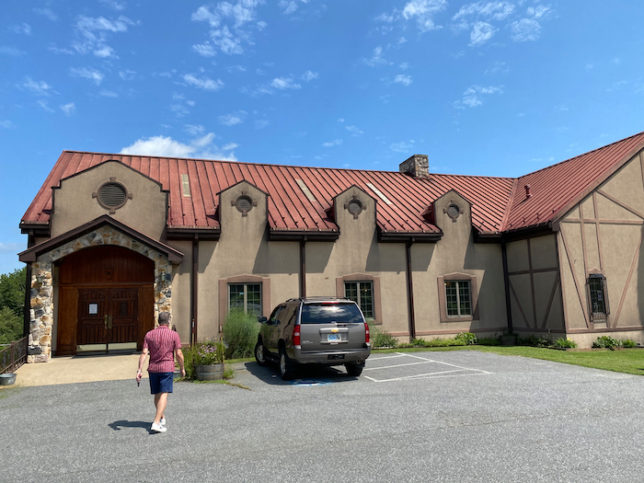
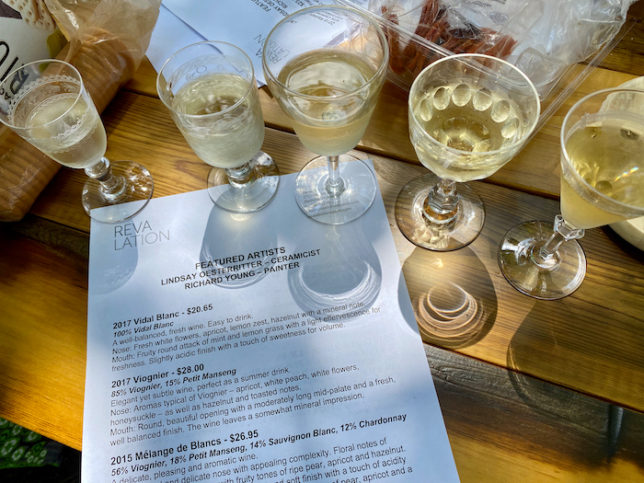
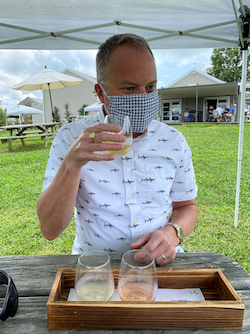 Masks: Yes—-wear them. Wear a face covering to converse with a tasting associate, to enter the building to use the restroom, or when you are not otherwise sipping wine. Masks may be removed when drinking or eating. Also, respect distanced seating arrangements and avoid moving furniture.
Masks: Yes—-wear them. Wear a face covering to converse with a tasting associate, to enter the building to use the restroom, or when you are not otherwise sipping wine. Masks may be removed when drinking or eating. Also, respect distanced seating arrangements and avoid moving furniture.